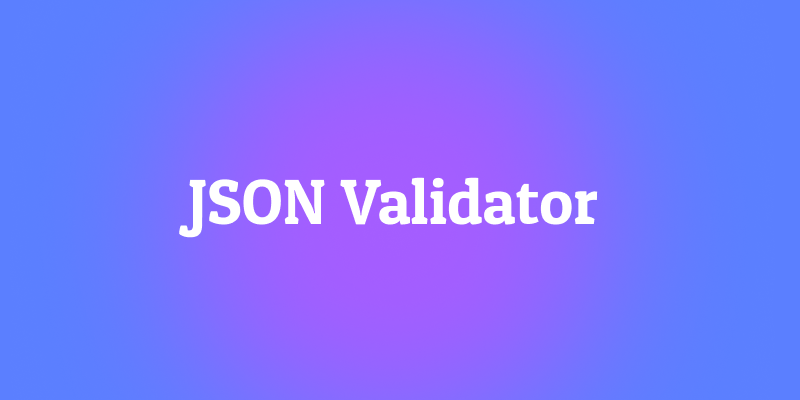In the rapidly evolving landscape of API development, security is not just a feature—it's a fundamental necessity. Protecting your endpoints from unauthorized access is paramount, yet managing authentication consistently across numerous endpoints and diverse team members can become complex and error-prone. Traditional methods often involve repetitive configuration for each endpoint, leading to inconsistencies and potential vulnerabilities. Recognizing this challenge, Apidog is thrilled to announce the launch of the new Security Schemes feature, designed to streamline and standardize how you manage API authentication and authorization within this all-in-one API development platform.
This powerful new capability allows you to define reusable authentication templates based directly on the OpenAPI Specification (OAS), ensuring compliance and interoperability while dramatically simplifying your workflow. What are security schemes, how do they align with OpenAPI specifications, and how can you leverage the security schemes features in Apidog to fortify your APIs? Delve into this comprehensive guide to understand and master this essential aspect of modern API security management.
What Are Security Schemes According to OpenAPI Specifications?
Before diving into Apidog's implementation, let's clarify: what are security schemes? In the context of the OpenAPI Specification (OAS) 3.0, the term "security scheme" refers to a definition of the specific method used to authenticate or authorize requests to an endpoint. Think of it as a blueprint or template describing how authentication works, rather than the specific credentials (like an actual API key or password) used.
OpenAPI defines several standard types for security schemes:
1. http: Covers standard HTTP authentication mechanisms, using the Authorization header. This includes:
- Basic Auth: Username/Password authentication.
- Bearer Auth: Using tokens (like JWTs) prefixed with "Bearer ".
2. Other schemes registered in the HTTP Authentication Scheme Registry.
apiKey: For API keys passed in request headers, query parameters, or cookies.oauth2: For the widely adopted OAuth 2.0 authorization framework, supporting various flows (Authorization Code, Client Credentials, etc.).openIdConnect: For authentication using OpenID Connect Discovery.
The core principle defined by OpenAPI specifications is a two-step process:
- Define: All potential security schemes your API might use are defined globally within the
components/securitySchemessection of your OpenAPI document. Each scheme is given a name and configured according to itstype(e.g., specifyingscheme: basicfortype: http, or definingin: headerandname: X-API-Keyfortype: apiKey). - Apply: Once defined, these named schemes are applied to the entire API (globally) or specific operations using the
securitykeyword. This keyword specifies which defined scheme(s) are required for access, potentially including required OAuth 2.0 scopes.
This approach separates the definition of the authentication method (the scheme) from its application and the specific credentials used, promoting consistency, reusability, and clarity in your API definition. Apidog's Security Scheme feature embraces this standard, bringing robust, specification-compliant security management directly into your development workflow.
Why Utilize Security Schemes Features in Apidog?
Implementing security schemes in Apidog offers significant advantages over manually configuring authentication for each request or endpoint individually. It aligns your workflow with OpenAPI specifications best practices and provides tangible benefits for individual developers and teams:
- Define Once, Reuse Everywhere: This is the cornerstone benefit. Create a security scheme (e.g., for Bearer Token authentication) once. You can then effortlessly apply this scheme to dozens or hundreds of endpoints or entire folders with just a few clicks. This drastically reduces repetitive setup and ensures consistency.
- Clear Separation of Concerns: Security schemes cleanly separate the authentication method definition (the template, like "use an API Key in the header named 'X-API-Key'") from the actual credential values (the specific key string). This makes maintenance far easier – if an authentication method changes (e.g., header name), you update the scheme in one place. Credentials can be managed separately, often per environment, without altering the fundamental scheme definition.
- Enhanced Security & Reduced Leakage: Because the scheme is separate from the value, default credentials set within Apidog for debugging are not automatically exposed or used when testing from published online documentation. Users debugging via documentation must manually enter credentials, preventing accidental leakage of sensitive keys or tokens through shared docs.
- Simplified Collaboration: Teams benefit immensely. A shared, centrally managed library of security schemes ensures everyone uses the same, approved authentication methods consistently across the project, reducing configuration errors and standardizing security practices.
- Automatic Inheritance: Apply a security scheme to a folder, and all endpoints within that folder automatically inherit the setting unless explicitly overridden. This hierarchical approach streamlines configuration for large APIs with common security requirements across sections.
- Full OpenAPI Compliance: By using Apidog's security schemes features, your API definitions remain fully compliant with OpenAPI Specification standards, ensuring interoperability and accurate documentation generation.
- Integration with Apidog Workflow: Security schemes in Apidog are integrated with core features like sprint branches, versioning, and change history. This means you can manage the evolution of your API's security alongside its functional changes, track modifications, and work securely within feature branches.
Adopting security schemes in Apidog is not just about following a specification; it's about implementing a more robust, efficient, secure, and maintainable approach to API authentication management.
How to Create Security Schemes in Apidog
Apidog makes defining and configuring security schemes intuitive, aligning closely with the concepts outlined in the OpenAPI specifications. You can create these reusable templates manually or leverage automatic creation when importing existing OpenAPI documents.
Method 1: Creating Security Schemes Manually
1. Navigate: In your Apidog project, go to the Components section in the left sidebar and select Security Schemes.
2. New Scheme: Click the + New Security Scheme button.

3. Select Type: Choose the type of authentication you need to define from Apidog's extensive list, which mirrors and expands upon the core OAS types:
- API Key (Header, Query, Cookie)
- Bearer Token (
Authorization: Bearer ...) - JWT (JSON Web Token specific)
- Basic Auth (Username/Password)
- Digest Auth
- OAuth 2.0 (Supporting multiple grant types)
- And others like OAuth 1.0, Hawk, AWS Signature, Kerberos, NTLM, Akamai EdgeGrid, or even Custom.

4. Configure: Fill in the required details based on the selected type. This includes:
- Name: A descriptive name for your scheme (e.g.,
MainApiKeyHeader,PetStoreOAuth). - Type-Specific Settings: For
API Key, specifyIn(header, query) andName(the header/query name). ForOAuth 2.0, configure Grant Types, URLs (Auth, Token, Refresh), and define available Scopes.
5. Save: Click Save. Your reusable security scheme is now available.

Advanced OAS Configuration:
Within the scheme editor, you can click Advanced Configuration to view and directly edit the underlying JSON or YAML representation conforming to the OpenAPI specifications. This allows for fine-tuning or defining more complex configurations if needed.

Method 2: Importing via OAS
If you import an OpenAPI file (.json or .yaml) that already contains definitions in components/securitySchemes, Apidog will automatically parse these and create the corresponding security schemes within your project's Components library, ready for you to apply.
By providing both a user-friendly UI and direct OAS editing capabilities, Apidog makes it easy how to use security schemes features effectively, regardless of your familiarity with the underlying OpenAPI specifications.
Utilizing Security Schemes in Your Apidog Workflow
Once you have defined your security schemes in Apidog's Components library, applying them to control access to your endpoints is straightforward and flexible. This is where the power of reusability and standardization truly shines.
Applying Security Schemes:
You can apply security schemes at two levels:
Folder Level:
- Select a folder in your API structure.
- Navigate to the
Authtab in the right-hand panel. - Choose
Security Schemeas the authentication type.

- Select the desired scheme(s) from the dropdown list created previously.

- If applying OAuth 2.0, you can select the default required scopes for endpoints within this folder.

Benefit: All endpoints and subfolders within this folder will automatically inherit this security scheme unless overridden. This is perfect for sections of your API with uniform authentication needs.
Endpoint Level:
- Select a specific endpoint.
- Go to the
Edittab, find theRequestsection, and select theAuthtab within it. - Choose
Security Schemeas the type.

- Select the desired scheme(s).

- For OAuth 2.0, precisely define the specific scopes required for this particular operation.

Benefit: Endpoint-level settings override any inherited settings from the parent folder, allowing granular control for operations with unique security requirements.
Managing Authentication Values:
Remember, the security scheme defines the method, not the value. When debugging:
- Default Auth Values: For convenience during development and testing within Apidog, you can set default credential values for a scheme within a folder or endpoint's
Authsettings (e.g., entering a test API key or getting a default OAuth 2.0 token). These defaults are used automatically when you hit "Send" in Apidog for endpoints inheriting them.

- Inheritance vs. Customization: When debugging, an endpoint's
RuntabAuthsection will show whether it's inheriting values from a parent or if values are set manually for that specific run. You can choose to use the inherited default or override it temporarily for a single request.

- Online Documentation Debugging: As mentioned, default values set within Apidog are not automatically populated when debugging from the online documentation. Users must manually enter credentials in the
Authsection of the "Try it" panel for security protection.

By mastering how to use security schemes features in Apidog, you leverage OpenAPI specification best practices to create a more organized, secure, maintainable, and collaborative API development environment.
Conclusion: Elevate Your API Security with Apidog's Security Schemes
Effectively managing API security is non-negotiable in modern software development. Apidog's Security Schemes provides a robust, standardized, and efficient solution, directly aligning with OpenAPI Specification best practices. By understanding what security schemes are – reusable templates defining authentication methods like API Key, Bearer Token, Basic Auth, and OAuth 2.0 – developers can move away from error-prone, repetitive endpoint-level configurations.



